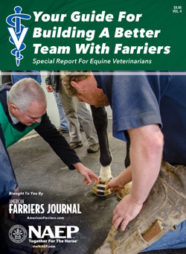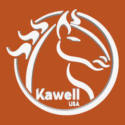In horses, dietary selenium plays an important role in the maintenance of membrane integrity, growth, reproduction and immune response.
A deficiency of selenium in foals may produce white muscle disease, a myopathy which results in weakness, impaired locomotion, difficulty in suckling and swallowing, respiratory distress and impaired cardiac function.
Strenuous exercise is known to induce oxidative stress, leading to the generation of free radicals. An increased generation of free radicals may induce lipid peroxidation and tissue damage in both the respiratory system and working muscle. This is particularly true if the animal has a deficient or impaired antioxidant status. Many antioxidants are selenoproteins, making selenium an extremely important mineral for performance horses.
Selenium in forages and seed grains is normally present as organic selenium. Sodium selenite and sodium selenate are common inorganic sources of supplemental selenium for horses. Digestion and retention of selenium-enriched yeast, an organic source, were greater in exercised Thoroughbreds than inorganic sources, according to studies conducted at Kentucky Equine Research (KER).
Nursing foals of mares supplemented daily with 3 mg of selenium had higher concentrations of IgG at 2, 4 and 8 weeks of age foals from mares receiving 1 mg of selenium each day.
Too much selenium is just as bad as too little in equine diets.
“Selenium is toxic in high doses, and horses with this status can show apparent blindness, head pressing, sweating, abdominal pain, colic, diarrhea, increased heart and respiration rates, and lethargy,” warns Kathleen Crandell, equine nutritionist for KER.
Chronic selenium toxicity is sometimes found in horses grazing on high-selenium soils. This condition is characterized by hair loss, especially of the mane and tail, as well as cracking of the hooves around the coronary band.







Post a comment
Report Abusive Comment